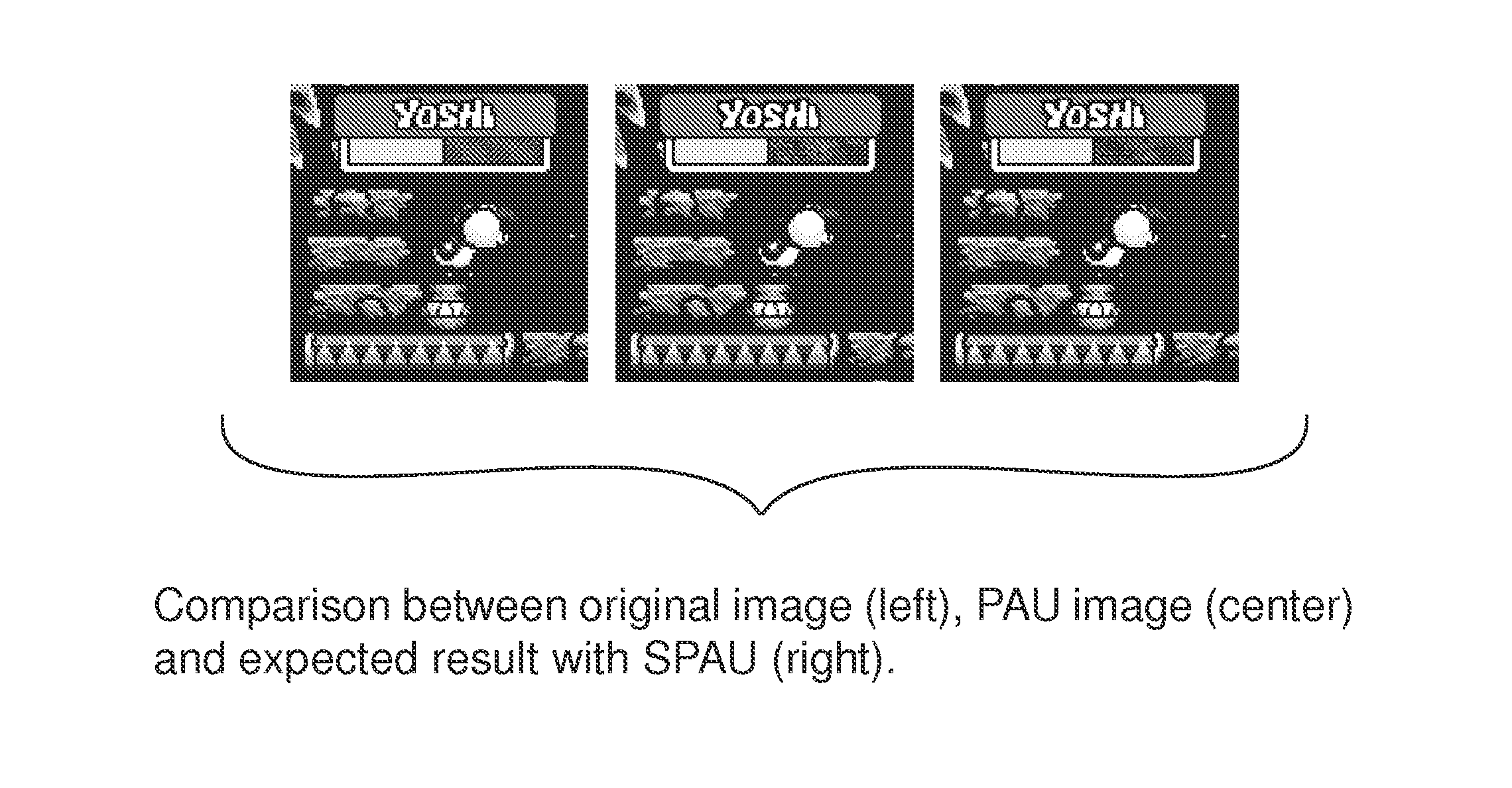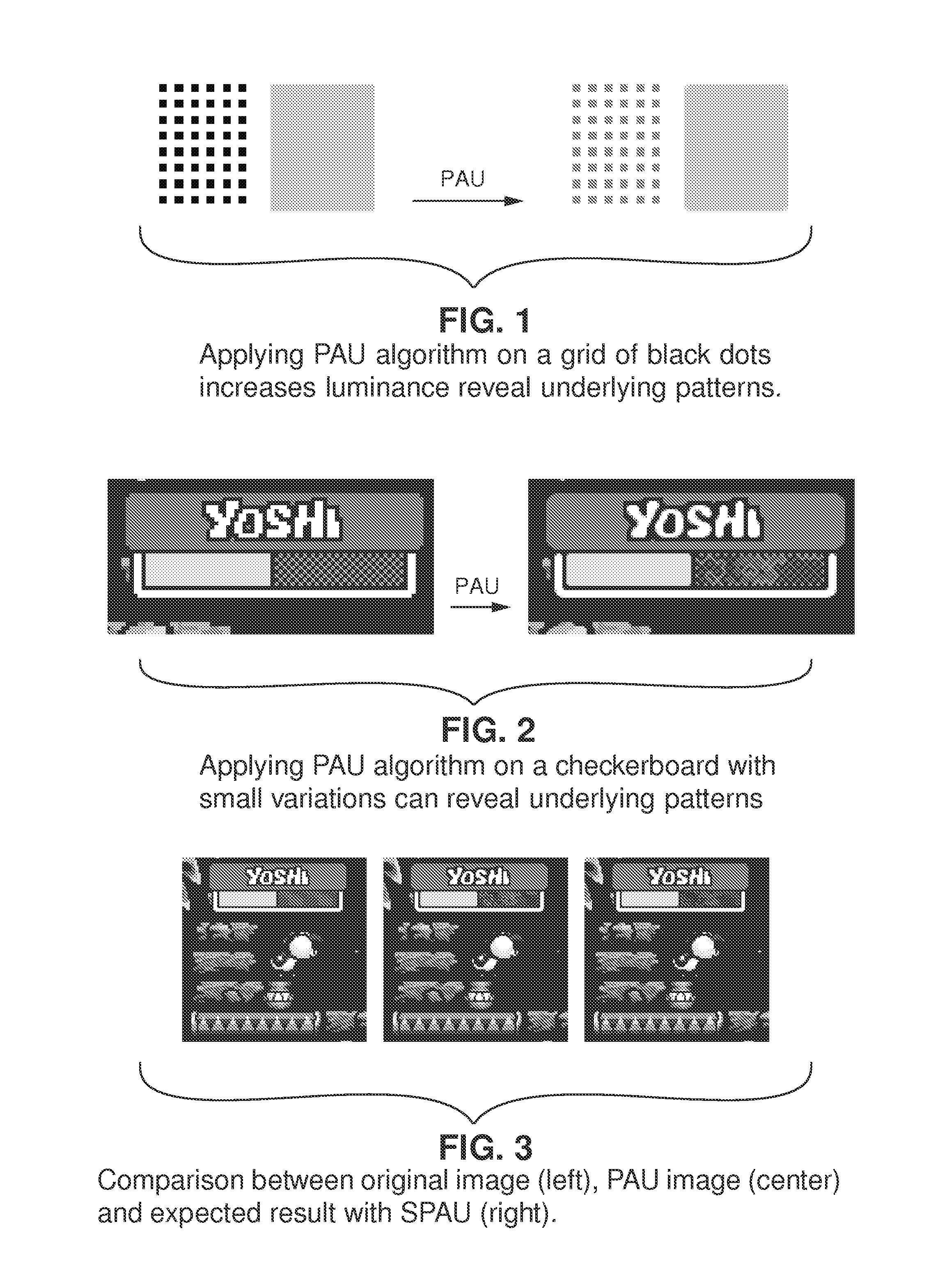Brightness-compensating safe pixel art upscaler
a pixel art and brightness compensation technology, applied in the field of filtering, can solve the problems of upscaled image to exhibit local brightness changes, imposed limitations on graphics designers to channel them toward pixel art, and image aesthetics are not pleasing, so as to reduce or remove the staircase effect of original picture, simple brightness subtraction, and sharp edges
- Summary
- Abstract
- Description
- Claims
- Application Information
AI Technical Summary
Benefits of technology
Problems solved by technology
Method used
Image
Examples
Embodiment Construction
[0023]Generally speaking, those skilled in the art will understand that there can be two aspects of photosensitivity issues: flashes over a large portion of the screen, and regular patterns over a large portion of the screen. The example non-limiting embodiments focus on ensuring that safe pixel art upscaling (“SPAU”) does not create photosensitivity issues that the original image did not cause.
[0024]When magnified or upscaled by a pixel art upscaler (PAU), most non-linear images will tend to exhibit some kind of brightness change. In particular, repeated patterns in an original image can create local brightness changes that some might say are potentially problematic. FIGS. 1 and 2 show some examples of effects. FIG. 1 shows a case where PAU can modify luminance in an area. This can create potentially harmful flashes if consecutive images have their brightness modified in opposite directions. To remove this risk, example non-limiting filtering algorithms will compensate brightness c...
PUM
 Login to View More
Login to View More Abstract
Description
Claims
Application Information
 Login to View More
Login to View More - R&D
- Intellectual Property
- Life Sciences
- Materials
- Tech Scout
- Unparalleled Data Quality
- Higher Quality Content
- 60% Fewer Hallucinations
Browse by: Latest US Patents, China's latest patents, Technical Efficacy Thesaurus, Application Domain, Technology Topic, Popular Technical Reports.
© 2025 PatSnap. All rights reserved.Legal|Privacy policy|Modern Slavery Act Transparency Statement|Sitemap|About US| Contact US: help@patsnap.com



